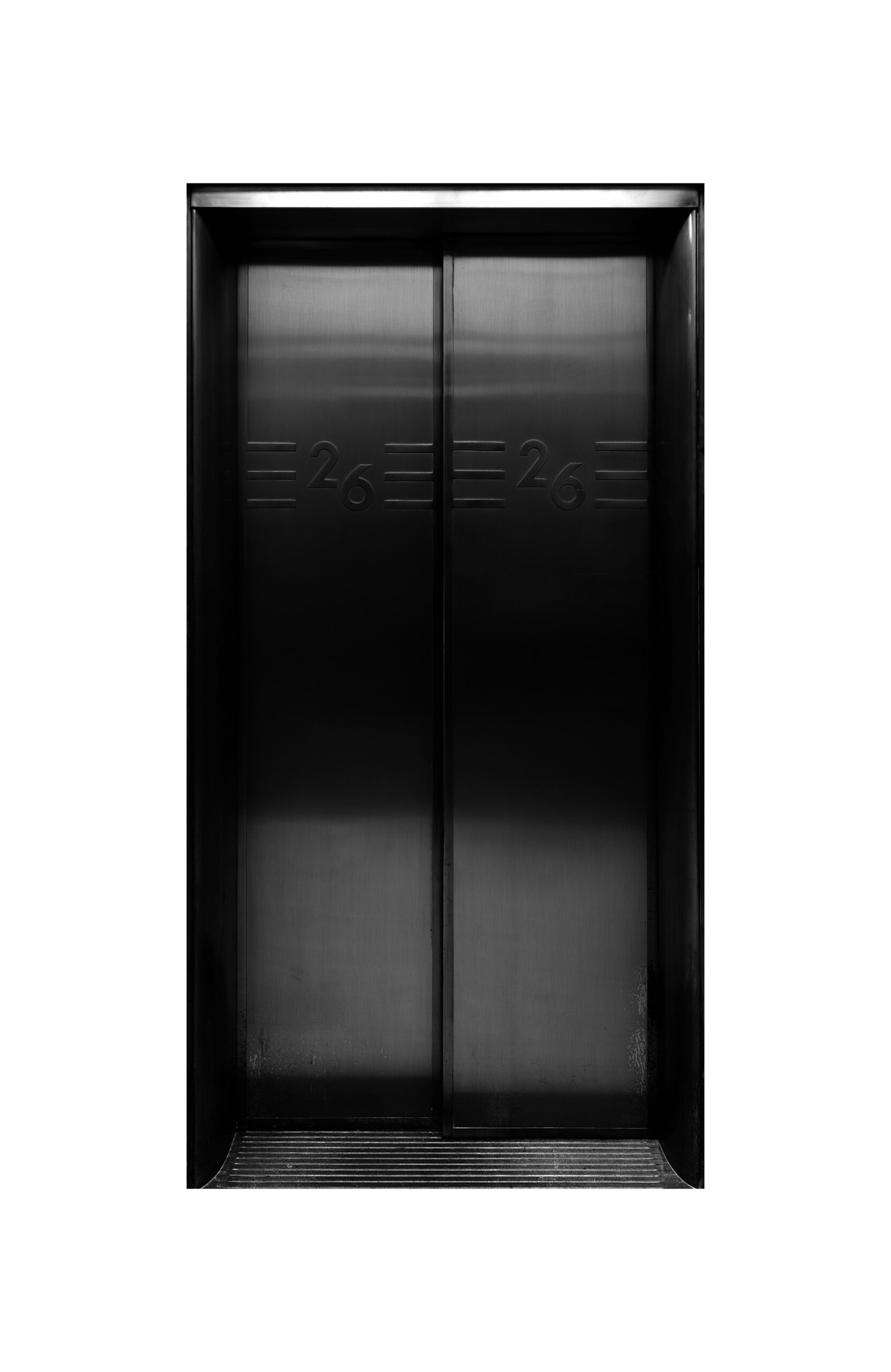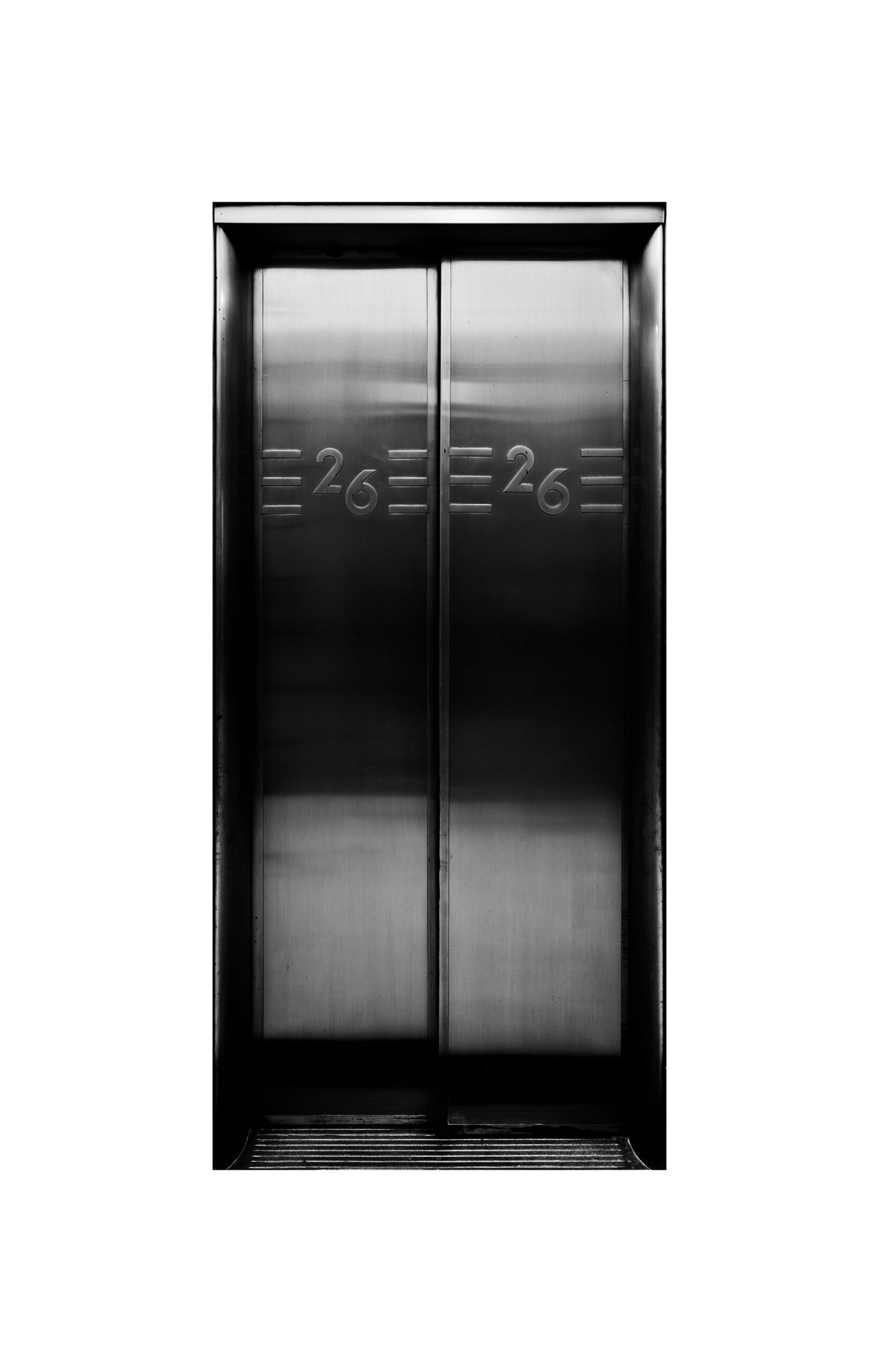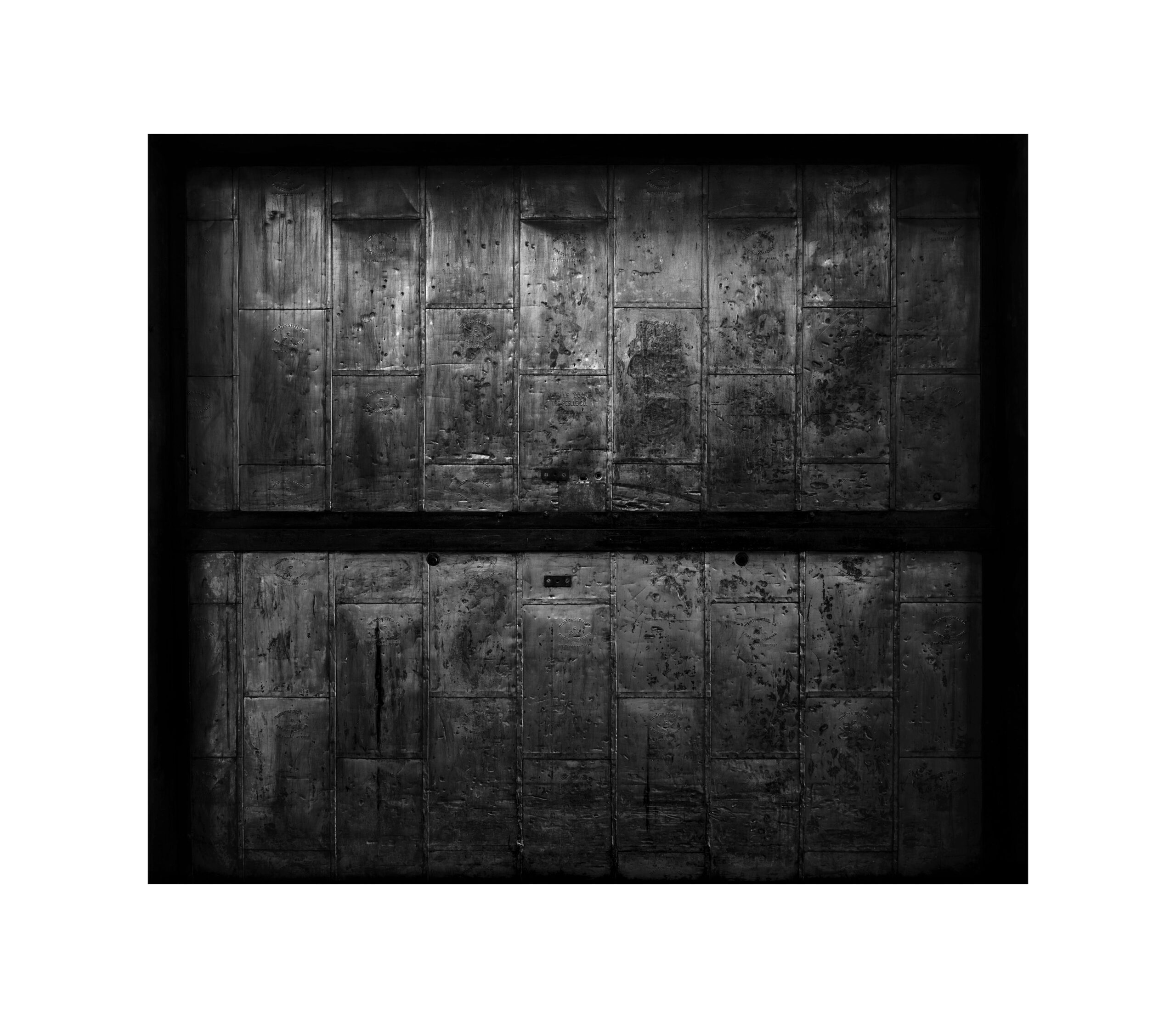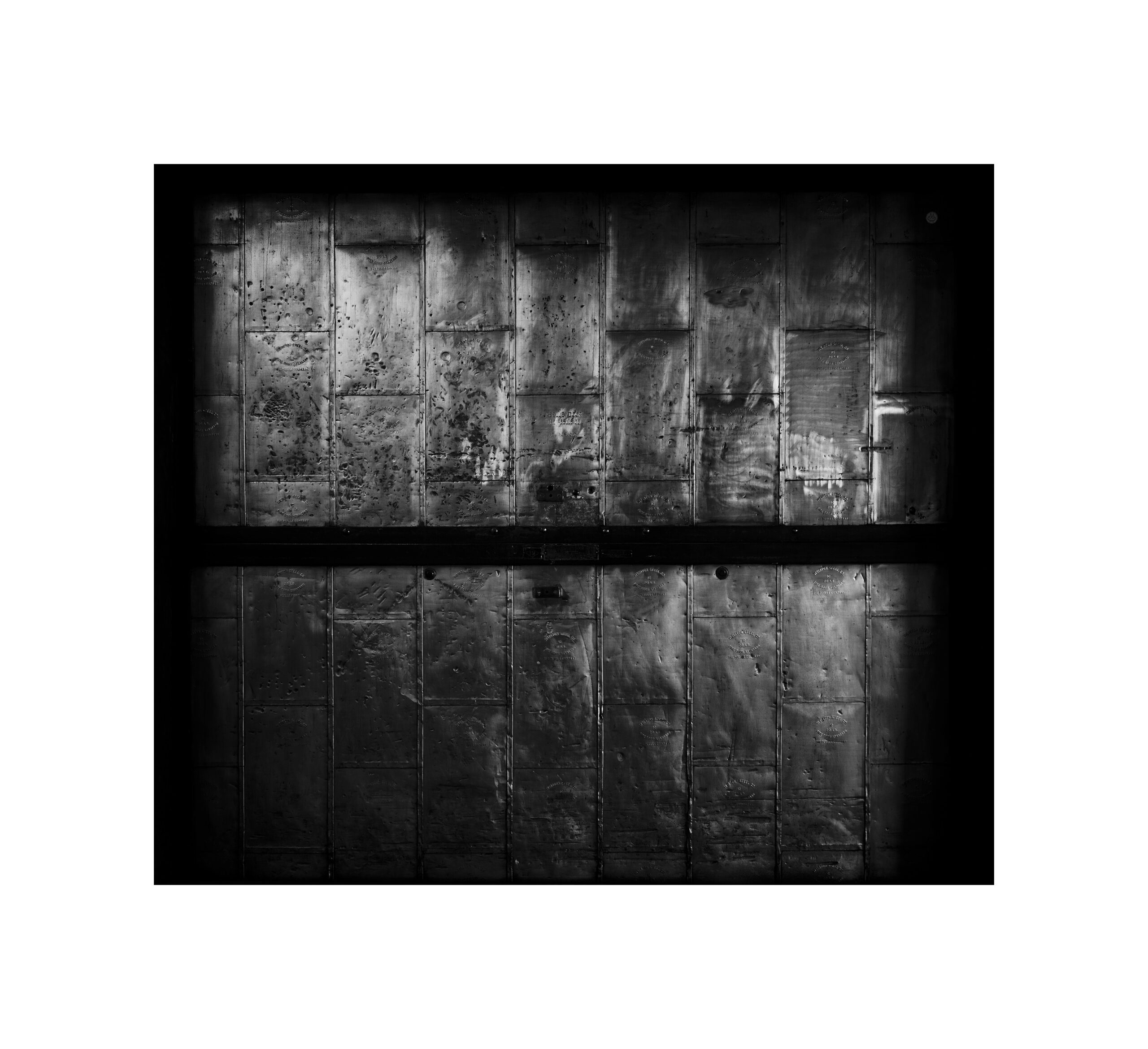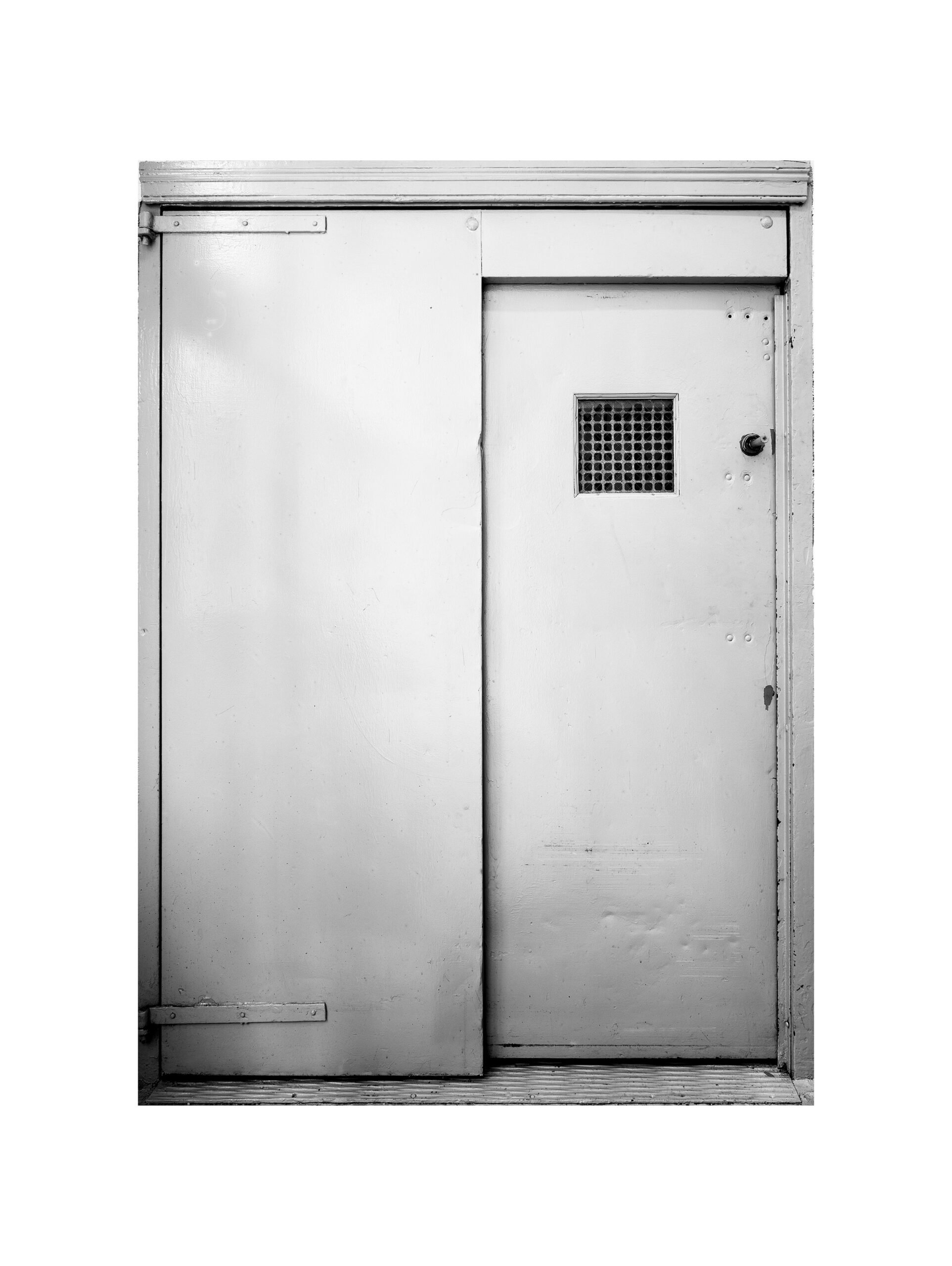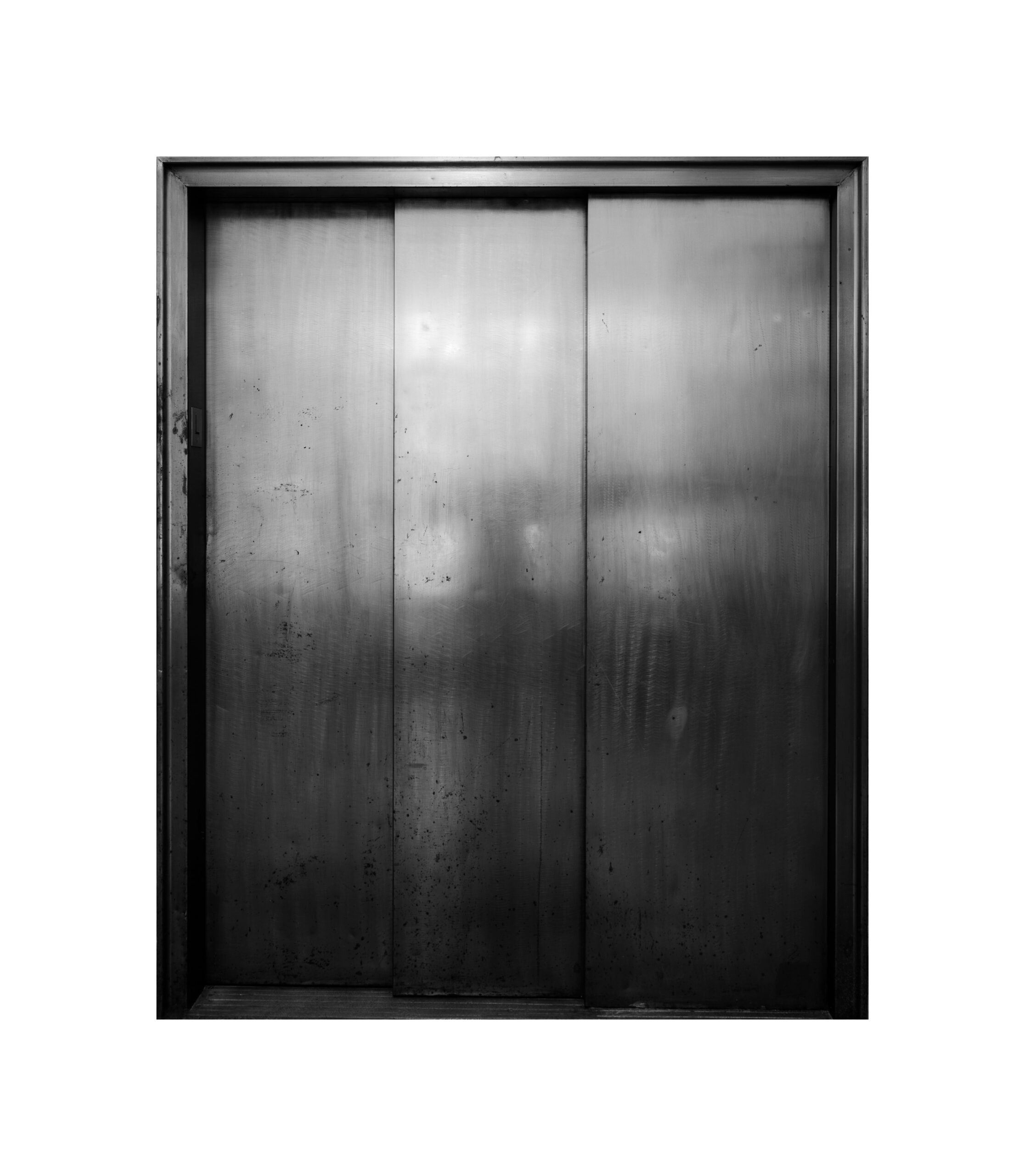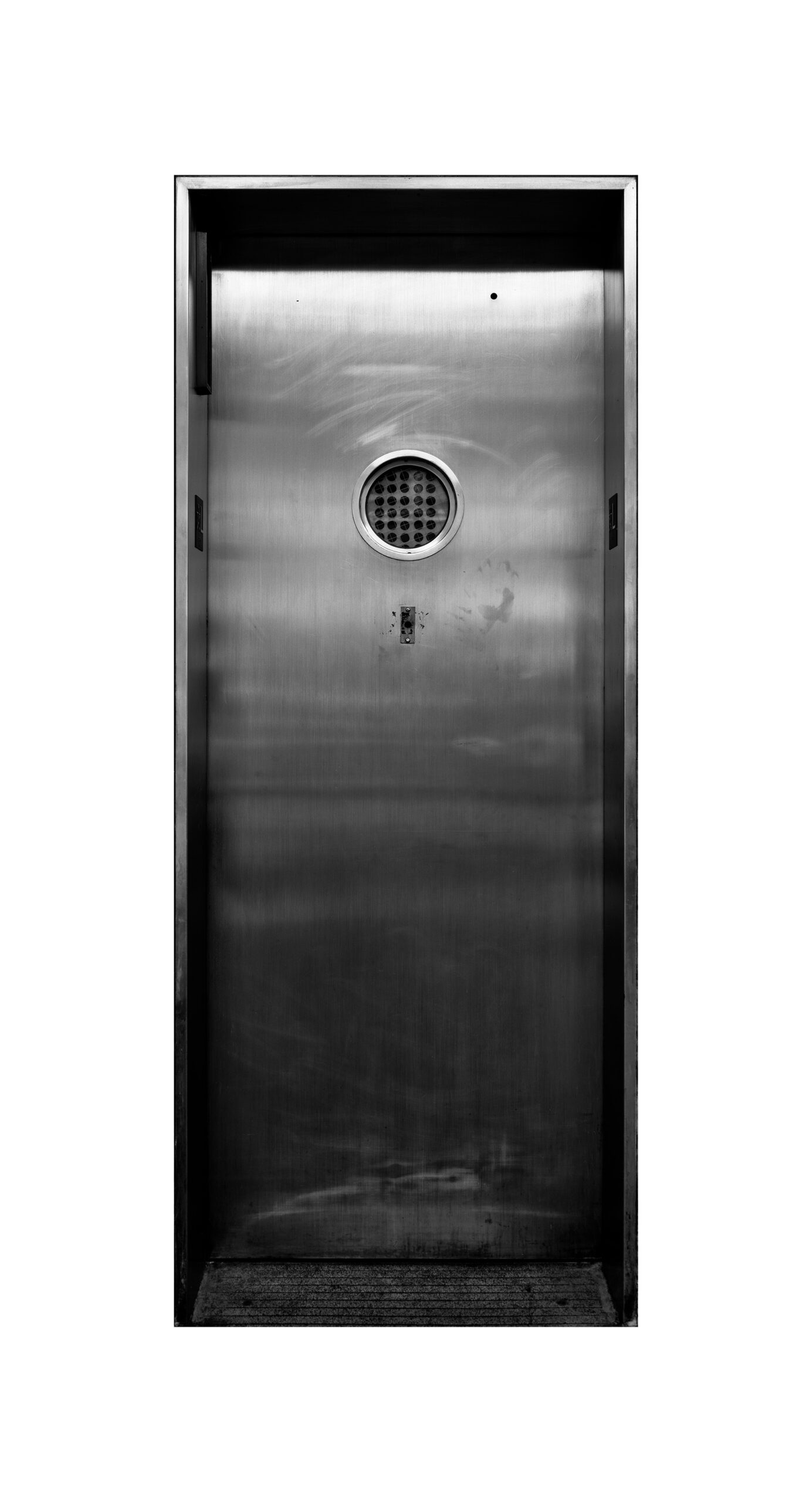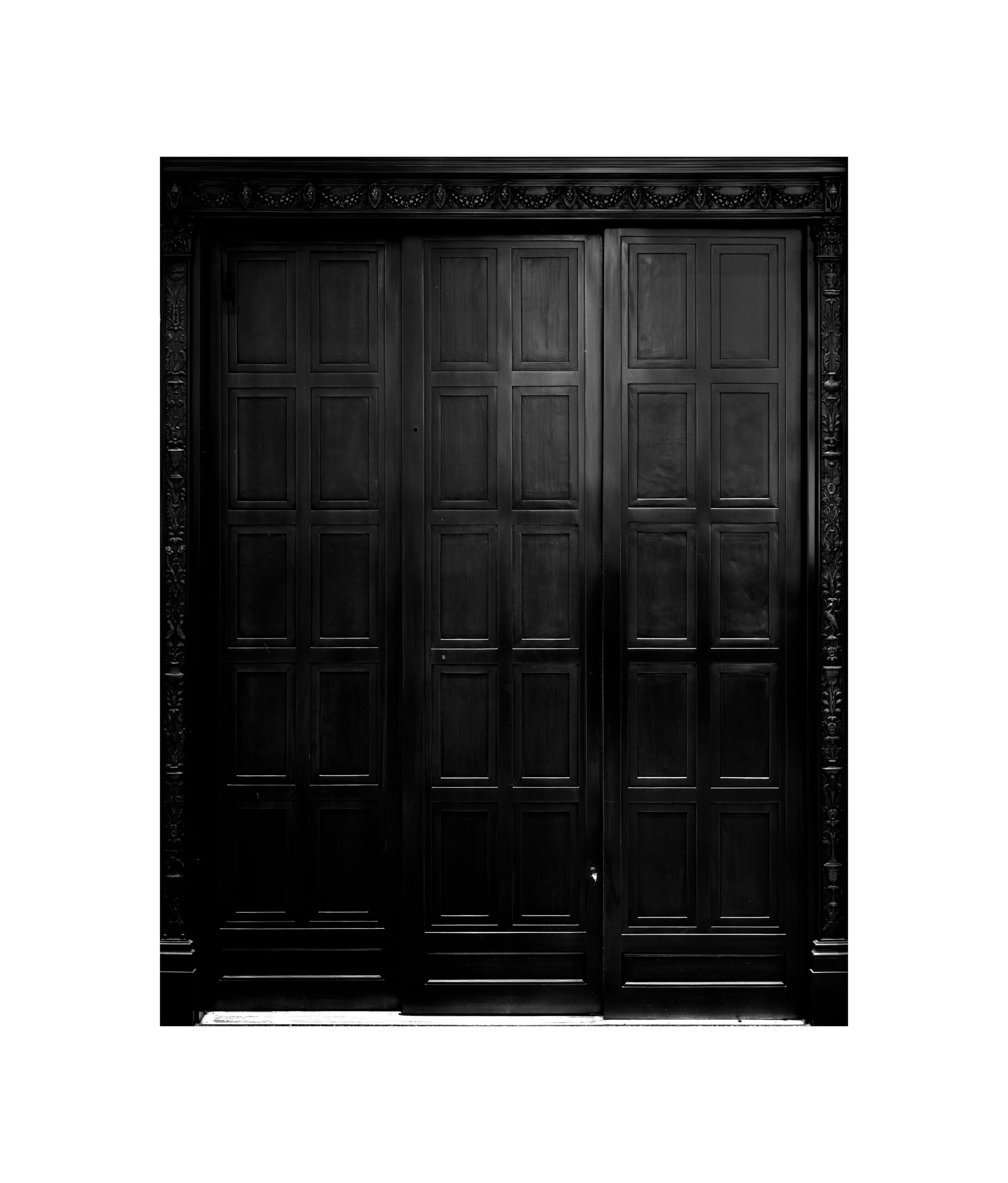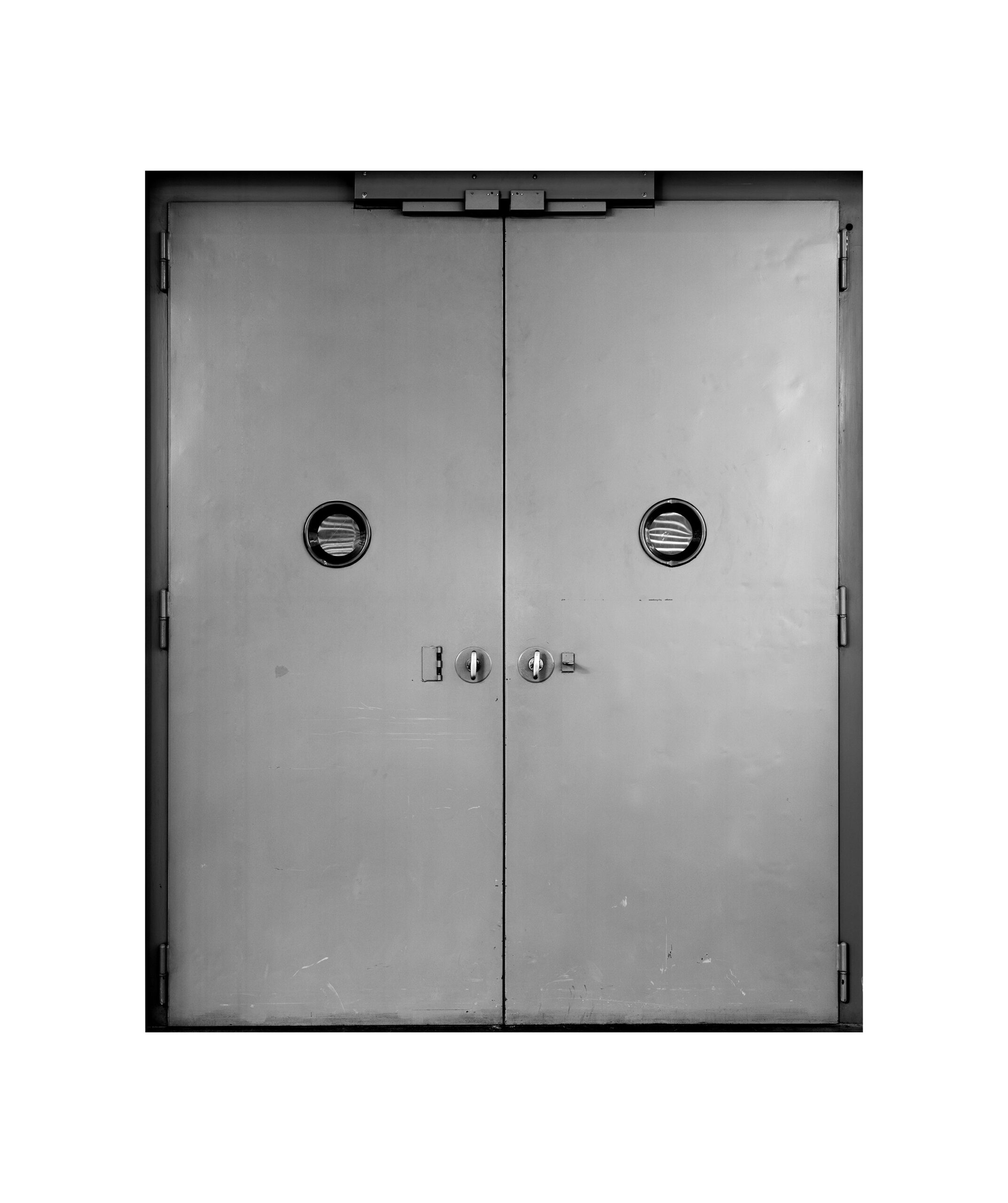Elevator Doors | 2004-2011
Black and white film photograph laminated on aluminum
The
doors are vertical planes, and immediately resemble the vertical flatness of
paintings.
The first two numbers in the series are elevator doors in what was Rockfeller’s first office building at No. 26 Broadway, in the financial district of Lower Manhattan.
They bear the number 26 in relief. This brings to mind Gronon’s series depicting safe deposit box doors and stock market quotation boards.
Their grey, shiny metal surface vaguely reflects the outside light coming from the entrance to the building.
Numbers 3 and 4 have two double freight elevator doors that close horizontally in the middle. Each has a double plane of black sheet metal dented by use, whose surface catches the light, offering the eye the substance of a painting charged with powerful energy.
Beyond what the object evokes, what is intended and what is revealed is the power of this surface which, caught in the light – and by the light – brings together the visual qualities that make both painting and sculpture so interesting.
Here, the photography is secondary to the reading of the subject, highlighting the structure of a pictorial field.
No. 6 takes the form of a framed painting with three panels whose dark reflections allow for interpretation so it becomes a watery, twilight landscape.
Like many of Philippe Gronon’s works, this piece offers two simultaneous and antagonistic aspects: the brutal reality of an industrial object and the possibility of reading it from a dreamlike angle.
When, as with No. 8, the object proves too baroque in style, its decorative aspect takes over. The point of the photograph then becomes more documentary, and we are intrigued by this industrial metal door which, in a very New York spirit (we are reminded of the ceiling plaques that still adorn many lofts), strives to reproduce the charms of cabinetwork from centuries gone by.
The first two numbers in the series are elevator doors in what was Rockfeller’s first office building at No. 26 Broadway, in the financial district of Lower Manhattan.
They bear the number 26 in relief. This brings to mind Gronon’s series depicting safe deposit box doors and stock market quotation boards.
Their grey, shiny metal surface vaguely reflects the outside light coming from the entrance to the building.
Numbers 3 and 4 have two double freight elevator doors that close horizontally in the middle. Each has a double plane of black sheet metal dented by use, whose surface catches the light, offering the eye the substance of a painting charged with powerful energy.
Beyond what the object evokes, what is intended and what is revealed is the power of this surface which, caught in the light – and by the light – brings together the visual qualities that make both painting and sculpture so interesting.
Here, the photography is secondary to the reading of the subject, highlighting the structure of a pictorial field.
No. 6 takes the form of a framed painting with three panels whose dark reflections allow for interpretation so it becomes a watery, twilight landscape.
Like many of Philippe Gronon’s works, this piece offers two simultaneous and antagonistic aspects: the brutal reality of an industrial object and the possibility of reading it from a dreamlike angle.
When, as with No. 8, the object proves too baroque in style, its decorative aspect takes over. The point of the photograph then becomes more documentary, and we are intrigued by this industrial metal door which, in a very New York spirit (we are reminded of the ceiling plaques that still adorn many lofts), strives to reproduce the charms of cabinetwork from centuries gone by.
1. Elevator Door n°1, 26 Broadway, New York, 2004
233 x 120 cm
2. Elevator Door n°2, 26 Broadway, New York, 2004
233 x 120 cm
3. Elevator Door n°1, 526 West, 26th Street New York, 2004
215 x 250 cm
4. Elevator Door n°2, 526 West, 26th Street New York, 2004
215 x 250 cm
5. Elevator Door, 9 White Street, New York, 2006
220 x 160 cm
6. Elevator Door, 37 Murray Street, New York, 2006
225 x 185 cm
7. Elevator Door, 225 East 43 rd Street, Lyceum Kennedy, New York, 2004
223 x 87 cm
8. Elevator Door, 65 Broadway, New York, 2006
228 x 181 cm
9. Elevator Door, Mamco , 10 rue des vieux Grenadiers, Genève, 2011
266 x 222 cm
